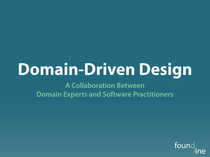It’s hard to believe tomorrow is the last day of TEK·X. Where did the time go? Today started with Matthew Schmidt’s 10 Developer Trends in 2010. He talked about agile development, browser standards, AJAX, security vulnerabilities, RIAs, touch interfaces, key/value stores, version control, cloud computing, and dynamic languages. While not a bad keynote, the topics seemed fairly basic and obvious given the audience.
Next up for me was Derick Rethans’ Xdebug talk. Xdebug is an extremely useful tool for PHP developers. I’ve used its stack trace feature as well as its code coverage analysis via PHPUnit. I’ve also dabbled with its profiling capabilities. The session introduced me to several other Xdebug features with which I’d like to experiment.
After that I had the pleasure of seeing Matthew Turland’s talk on New SPL Features in PHP 5.3. New SPL data structures in PHP 5.3 include stacks, queues, heaps, priority queues, and sets. Matthew provided test code that compared the performance and memory usage of each these new data structures to that of using PHP’s array functionality.
I skipped the first afternoon session to take part in the Hack Track which happened to coincide with Zend Framework’s May Bug Hunt Days. I was granted commit access and directly committed my first bug fix, a small change to make HTTP headers case-insensitive.
Others stuck around to fix more bugs while I went to check out Bill Karwin’s Models for Hierarchical Data with SQL and PHP. Examples of hierarchical data include categories/subcategories, bill of materials, and threaded discussions. Bill talked about four main approaches to storing hierarchical data in SQL databases: adjacency list, path enumeration, nested sets, and usage of a closure table.
The adjacency list is a naive approach that almost everyone tries first. Basically, each entry knows its immediate parent. The problem with this approach is that querying deep trees can be very inefficient involving many joins. Path enumeration involves storing an enumerated chain of ancestors in each entry. This can be very efficient and take advantage of indexing. However, there is no referential integrity with this approach. The nested set approach seemed a bit complicated. I don’t feel I can explain it properly here, so you’ll have to check out Bill’s slides if you’re interested in how this works. The closure table approach made the most sense to me and didn’t seem overly complicated. Not only do you store each entry, but you also store every path including those from the parent node to each descendant, those from each ancestor to its child node, as well as a reflexive reference from the node to itself.
My final session of the day was Travis Swicegood’s Building Real-Time Applications with XMPP, the Extensible Messaging and Presence Protocol. If you’ve use Google Talk then you’ve used XMPP. As a web developer, the request and response pattern in HTTP is ingrained into my thinking. However, XMPP is a very different creature in that it keeps a socket open during what can be a lengthy exchange of messages. While I don’t think HTTP is going away anytime soon, real-time applications involving potentially large numbers of publishers and subscribers (e.g. Twitter) are becoming more prevalent and XMPP is well suited for this environment.





One Trackback
[…] This post was mentioned on Twitter by Bradley Holt, Zend Framework. Zend Framework said: Bradley Holt: TEK·X Day Two: It’s hard to believe tomorrow is the last day of TEK·X. Where did the time go? Today … http://bit.ly/9mThII […]